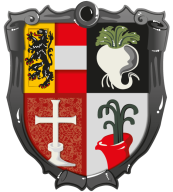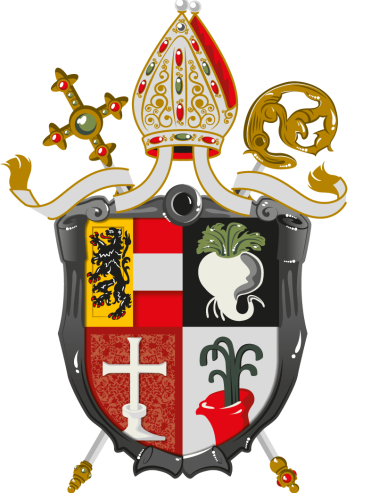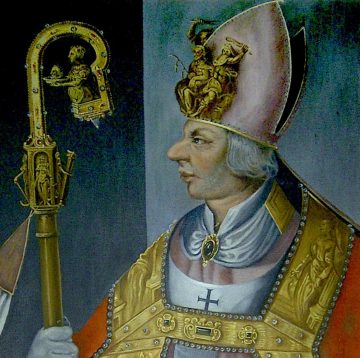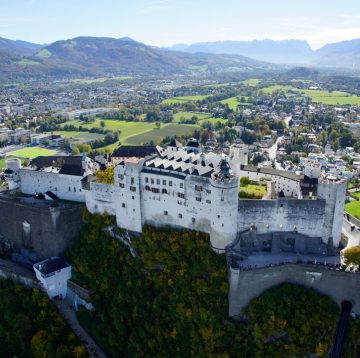He brought power and prosperity to Salzburg
His talents made the principality rich

A member of a Carinthian aristocratic family
Leonhard was born in 1442, probably at Viktring in Carinthia. His parents were Otto von Keutschach, a judge of the Viktring manorial court, and Gertrud von Möderndorf.
The ancestral seat of the Keutschach family was on the northern shore of Lake Keutschach in what is today South Carinthia.
Unpretentious but skilful
Leonhard's tendency to be rather stuffy and sombre widely attracted the criticism of the citizens of Salzburg who had themselves become somewhat conceited thanks to their trade with Venice and the privileges awarded to them by Frederick III, the Holy Roman Emperor.
Leonhard was initially a canon of the Augustinians, subsequently being appointed the provost and then arch-provost of Eberndorf Abbey in 1490. In 1495 he was elected Archbishop of Salzburg. In his final years he lived in the palace in Hohensalzburg Fortress. He died on 8 June 1519 in Salzburg.
Salzburg flourishes
Leonhard von Keutschach made Salzburg one of the richest principalities of the Holy Roman Empire.
He secularised the cathedral chapter and dedicated himself to reforming the chaotic financial system of his archdiocese. During his reign, the local mining of silver and gold thrived and considerable income was generated by means of salt production.
The increasing prosperity of the inhabitants and the peaceful times ushered in one of the heydays of art and culture.
At the same time, Leonhard's attempt to impose a ban on the production of good quality beer by private breweries in order to promote the sale of beer from his own breweries proved abortive.
A positive outcome
On the whole, Leonhard's endeavours in the sphere of politics were successful both domestically and on the wider stage. He managed to keep Salzburg out of involvement in conflicts and the Landshut War of Succession by means of payment of 15,000 Guilders.
He was always considered to be a conscientious churchman. Even Martin Luther was willing to place considerable trust in him.
On his death, he left behind an Archdiocese of Salzburg that was among the richest of German states, behind only the Austrian crownlands, Bavaria and Cologne.
Construction projects
In addition to extending the defences of the fortress of Hohensalzburg and ordering the building of many palaces and castles, Leonhard was also responsible for the restoration of the old Roman road over the Radstädter Tauern Pass.
- Carinthia: Gmünd, Friesach, Althofen, Tanzenberg, Taggenbrunn, Stein, St. Andrä im Lavanttal
- Styria: Deutschlandsberg, Leibnitz
- Lower Austria: Traismauer
- Rupertiwinkel: Staufeneck, Lebenau
- Tyrol: Itter, Windisch-Matrei, Castle of Lengberg
- Salzburg: Castle of Mauterndorf, Castle of Glanegg, Radstadt
- Restoration of the old Roman road over the Radstädter Tauern Pass.
The development of Hohensalzburg
The state apartments in the fortress commissioned by him are outstanding examples of secular Late Gothic architecture that are almost without parallel. They demonstrate that the archbishop must have had a quite remarkable feeling for art. Leonhard von Keutschach also authorised the extension of the defences of the fortress (construction of the curtain wall, installation of cisterns and of the Chapel of St. George), adding the pipe organ known as the 'Salzburg Bull'. The first cable railway was also installed at that time, now considered the oldest cable railway still in existence.
On the southern bastions, Leonhard had vineyards and rose gardens planted; in the cellars he stored large quantities of the local Wachau Osterwein and sweet wines of which he was particularly fond. In the inner wards lived dozens of half-tame white peacocks.
(Picture: Altstadt Verband / Sajovic)
The von Keutschach coat of arms
The main shield of the coat of arms is quartered. In the top left are the arms of the Archbishopric of Salzburg. In the top right are the von Keutschach family arms; a white turnip on a black field. The turnip in the von Keutschach coat of arms was at that time a symbol of wealth and high status. To the bottom left are the arms of the Provost of Salzburg, a silver altar crucifix on a red field.
The arms in this form thus reference Leonhard's appointment as provost. The arms of the Möderndorf family occupy the bottom right quarter. This device has been variously interpreted ‒ on the one hand as a quiver with arrows but also as an upset hat with ostrich feathers; the field in this case is silver.

Get the relating product:
- Spruce Liquor, a speciality made in the city of Salzburg




